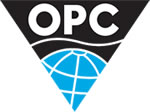Europe / Caspian / CIS
Country profile: Uzbekistan
| Location: | Central Asia, north of Afghanistan |
| Climate: | mostly midlatitude desert, long, hot summers, mild winters; semiarid grassland in east |
| Terrain: | mostly flat-to-rolling sandy desert with dunes; broad, flat intensely irrigated river valleys along course of Amu Darya, Syr Darya (Sirdaryo), and Zarafshon; Fergana Valley in east surrounded by mountainous Tajikistan and Kyrgyzstan |
| Size: | 447400 sq. km total (Land area: 425400 sq. km Water area: 22000 sq.km) |
| Population: | 28,268,440 (July 2008 est.) |
| Languages: | Uzbek 74.3%, Russian 14.2%, Tajik 4.4%, other 7.1% |
| Government: | republic; authoritarian presidential rule, with little power outside the executive branch |
| Capital city: | Tashkent (Toshkent) |
| Legal system: | based on civil law system; has not accepted compulsory ICJ jurisdiction |
| Currency: | soum (UZS) |
| Licensing: |
Country profile
Central Asia is loosely defined as including the countries of Turkmenistan, Uzbekistan, Tajikistan, Kyrgyzstan, Kazakhstan, and Afghanistan. The energy sectors of Turkmenistan and Uzbekistan are covered briefly in the Caspian Sea Region Brief, but this report discusses these two countries’ growing energy sectors in greater detail. Turkmenistan and Uzbekistan sit on large reserves of oil and natural gas, yet both countries face a myriad of challenges in bringing those reserves to world markets. Both countries are geographically far from the end-use markets they serve and lack sufficient pipeline infrastructure to export more hydrocarbons.
Also, other hydrocarbon-rich Central Asian and Caspian states with more favorable investment climates and greater access to markets pose competition for Turkmenistan and Uzbekistan. Both countries are eager to diversify export routes for their resources outside of the Russian-controlled pipelines, but each must seek to obtain capital, technical assistance, and political support for alternative pipelines. Russia conquered Uzbekistan in the late 19th century. Stiff resistance to the Red Army after World War I was eventually suppressed and a socialist republic set up in 1924.
During the Soviet era, intensive production of "white gold" (cotton) and grain led to overuse of agrochemicals and the depletion of water supplies, which have left the land poisoned and the Aral Sea and certain rivers half dry. Independent since 1991, the country seeks to gradually lessen its dependence on agriculture while developing its mineral and petroleum reserves. Current concerns include terrorism by Islamic militants, economic stagnation, and the curtailment of human rights and democratization.
Energy production and consumption
| Oil | Gas | |
| Production: | 124,900 bbl/day (2005) | 62 billion cu m (2006 est.) |
| Consumption: | 155,000 bbl/day (2005) | 48 billion cu m (2006 est.) |
| Exports: | 6,941 bbl/day (2004) | 12 billion cu m (2006 est.) |
| Imports: | 11,230 bbl/day (2004) | |
| Reserves: | 594 million bbl (1 January 2006 est.) | 1 trillion cu m (1 January 2006 est.) |
| Major fields: |
Uzbekistan - recent news
| 25 Nov 25 |
Uzbekistan: Condor’s first horizontal well in Uzbekistan reaches TD Condor Energies, a Canadian based, internationally focused energy transition company working in Central Asia has announced its first horizontal well in the Andakli field in Uzbekistan, Andakli-23 ('A-23') has reached total depth ('TD') in the Jurassic carbonate reservoir while two recent workovers from a newly discovered gas zone in the A-23 deeper Jurassic clastics interval have increased average daily production of gas and condensate to 11,844 boepd over the past three days. |
| 11 Nov 25 |
Uzbekistan: Masdar signs landmark agreement for Uzbekistan’s largest standalone battery energy storage project Abu Dhabi Future Energy Company PJSC – Masdar, a global clean energy leader, has signed a Battery Storage Service Agreement with JSC Uzenergosotish, Uzbekistan’s state-owned joint-stock company, to develop the nation’s largest standalone battery energy storage (BESS) project. |
| 29 Oct 25 |
Uzbekistan: EBRD co-finances major renewable energy project in Central Asia The European Bank for Reconstruction and Development (EBRD) is providing a comprehensive financing package of US$ 142 million (€121 million) for two special-purpose vehicles (SPVs) that will develop Uzbekistan’s and Central Asia’s largest combined solar photovoltaic and battery energy storage project to date. |
| 23 Oct 25 |
Uzbekistan: Condor provides an operational update on its first horizontal well in Uzbekistan Condor Energies, a Canadian based, internationally focused energy transition company working in Central Asia, has finished drilling the vertical portion of its first well in Uzbekistan to a total depth of 2805 meters. |
| 10 Sep 25 |
Uzbekistan: Condor Energies begins multi-well drilling program in Uzbekistan Condor Energies, a Canadian based, internationally focused energy transition company working in Central Asia, has started a multi-well drilling program in Uzbekistan. |
Uzbekistan - more news
Other countries in this region
- Afghanistan,
- Albania,
- Armenia,
- Austria,
- Azerbaijan,
- Belarus,
- Belgium,
- Bosnia and Herzegovina,
- Bulgaria,
- Croatia,
- Cyprus,
- Czech Republic,
- Denmark,
- Estonia,
- Faroe Islands,
- Finland,
- France,
- Georgia,
- Germany,
- Greece,
- Greenland,
- Hungary,
- Iceland,
- Ireland,
- Italy,
- Kazakhstan,
- Kyrgyzstan,
- Latvia,
- Lithuania,
- Luxembourg,
- Malta,
- Moldova,
- Montenegro,
- Netherlands,
- Norway,
- Poland,
- Portugal,
- Romania,
- Russia,
- Serbia,
- Slovakia,
- Slovenia,
- Spain,
- Sweden,
- Switzerland,
- Tajikistan,
- Tatarstan,
- Turkey,
- Turkmenistan,
- Ukraine,
- United Kingdom











